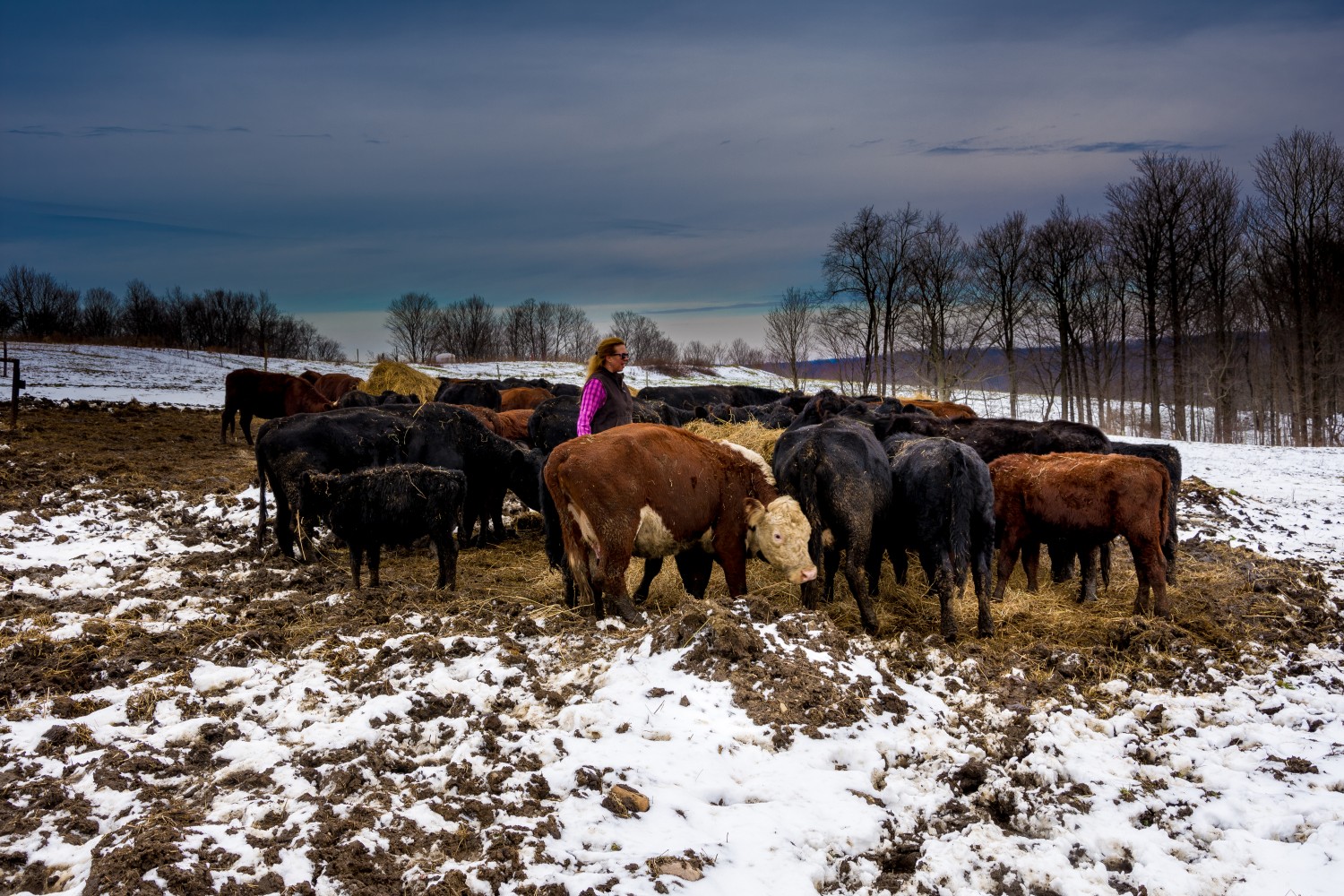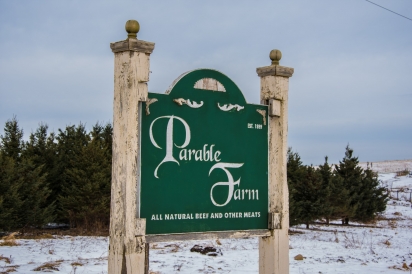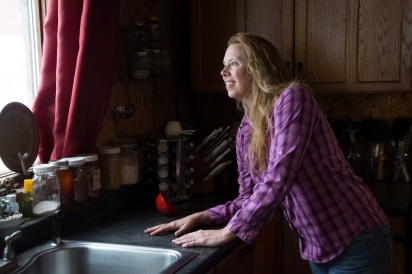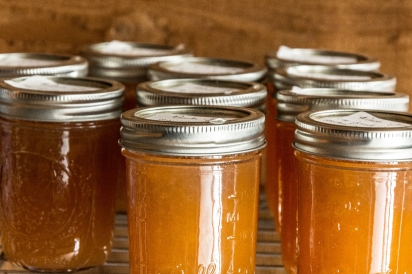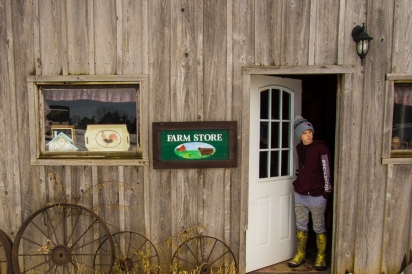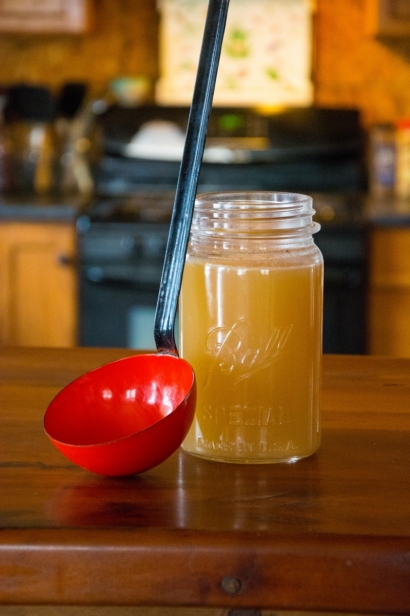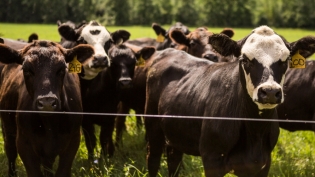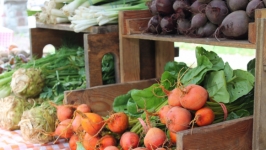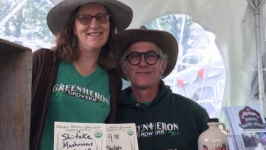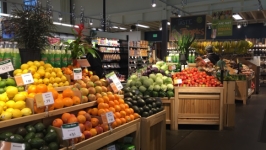Holistic Husbandry at Parable Farm
How a family farm in Ripley prioritizes caring for animals, land and community
The day is damp, gray and murky—the sort that makes your head feel heavy. My GPS says I’m nearing my destination, so I try to shake the fog out of my brain. I have an interview to conduct—better find a way to cut through this blurry mind-scape.
But the clouds clear as soon as I meet my interview subject, Sarah Parker of Parable Farm in Ripley, NY. Capable, candid and refreshingly genuine, Sarah exudes the strength of a woman who’s found her purpose: spreading the message of good health through great eating. Fortunately for us, she and her husband, Rob, have decided to be part of the solution, raising beef, pork, chicken and turkey (for the holidays) on lush land, fresh air and love.
“We utilize a simple formula: a healthy diet plus a generous amount of a carefree happy environment equals a happy and content animal.”
Parable Farm’s premise is stated on their website: “We utilize a simple formula: a healthy diet plus a generous amount of a carefree happy environment equals a happy and content animal.”
They primarily raise cattle, with a herd comprised mostly of Black Angus, plus Red Devon, Red Angus and Hereford. It’s a “closed herd,” meaning that all of their cows “are born and raised right here on our farm, on our grass, and are guaranteed to be 100 percent grain free.” The cows are completely pasture-raised, “without the use of any antibiotics, hormones, pesticides or fertilizers,” their website explains. “What we do ‘use’ is green grass, blue sky, fresh air, rainy days, pure water and plenty of grazing room.”
Sarah and Rob didn’t grow up farming. In fact, they lived in downtown Erie for 21 years. They’d thought about moving out to the farm her parents owned. Then, about seven years ago, Sarah’s mom became ill, and called Sarah to help with chicken slaughter. A few days later, her mom’s health deteriorated further. It soon became evident that Sarah, a nurse, would have to help lead her family through the end of her mom’s life.
She tried a food-based remedy to stop hemorrhaging that greatly eased the pain her mom might have felt, given what her body was enduring. Sarah was stunned. “That started me thinking very differently about what the body is capable of doing.”
That perspective has motivated Sarah to teach what she’s learned about the healing potential of high-quality foods every chance she gets, from welcoming visitors and school groups to the farm, to giving talks at various venues throughout the area.
“‘Connect to your cure’ is something that I say a lot. If what you’re trying to do is improve your health, you have to connect to where your food is coming from—and that’s more than the store that you buy it in."
“‘Connect to your cure’ is something that I say a lot,” she explains. “If what you’re trying to do is improve your health, you have to connect to where your food is coming from—and that’s more than the store that you buy it in. You need to know how these animals lived. Were they loved? Were they stressed? People have told me that coming out and visiting the farm, and connecting to the food, changes the way they feel about their food.”
She speaks from experience.
“My husband and I have really paid attention throughout our transition [to farming],” Sarah adds. The farm consumed them, and changed the way they consume. “Suddenly we’ve taken over a 700-acre farm, with all of these animals, having no background in it whatsoever. We certainly started eating more healthfully just because we lacked the ability to run and get food.”
So, they ate primarily what had been grown, raised or preserved on the farm. And they’ve never felt better. “It struck a chord in me as being just right—exactly what our bodies wanted.”
Sarah says that “by about month three, we knew we were totally made for this. We were high-fiving one another every day. It just felt perfectly natural for who we are as a couple. We decided we were just going to breathe it all in.”
Here, Sarah inhales like a seasoned yogi and exclaims, “Just breathe it all in, and then run with it!” Talking to her, you sense that an emotional outpouring is always a breath away. Like she lives her life a little closer to the surface. It’s invigorating just to be around someone like that.
Her charisma also attracts great interest from teenagers—especially girls—who often ask about work opportunities at Parable Farm. Internships are on the horizon. “I’m excited for the future,” she says.
Meanwhile, she’s also a school nurse at Sherman Central School, which “graduates all of our kids, and then they wave goodbye to the area and never come back. We have this terrible brain drain.”
So she’s talking with administrators and students about encouraging young people to become educated, then come back and put down roots—getting ready to produce food. She expects that “everything’s going to shift,” since “producing so much of our nation’s food on the West Coast just isn’t sustainable. I really think we’re going to see a huge uptick in food production around here.”
And they’ll surely be part of that. Parable Farm’s CSA started almost three years ago and runs two five-month rotations per year. They started with six shareholders. “We’re at 47 now,” Sarah says, “66 will self-sustain us, and I think we’re going to hit 60 with this next rotation.”
Meanwhile, bone broth she produced last year, using therapeutic instructions she’d obtained from the Cleveland Clinic, was incredibly popular. But selling it ready-made isn’t the ideal way to support Sarah’s mission of connecting people to their cure.
So she came up with bone broth kits, enabling customers to easily make their own, without even having to touch the ingredients. The kits include five pounds of roasted 100 percent USDA-inspected grass-fed beef bones, 10 pastured chicken feet and two sets of pastured chicken giblets, all packaged in a paper bag printed with full instructions.
Using the kit, it takes two days to produce about five quarts of high-quality bone broth, which will serve a family of four for about a week. (Contact the farm for more information about how and where to buy.)
This season, 2 Ames Restaurant at Chautauqua Institution will feature Parable Farm chicken on their lunch and dinner menus. “I really appreciate the work they do to support local farms,” Sarah says. “They have a great understanding of what it takes to produce food on this level.”
Scaling up to meet demand shouldn’t be a problem. The challenge, Sarah explains, is trying to secure butchering, because a USDA-certified butcher is required for beef and pork, and there aren’t many locally.
Before choosing McDonald Meats in Girard, PA, Sarah toured several facilities, none of which was up to her standards. “Why would I take the time to raise animals in this way, only to have them go into a facility in their last couple of days and be terrified?” she reasons. “But when I met Percy [McDonald], I liked him immediately.”
She also appreciated his transparency. He allowed Sarah access to the whole process, so she could be reassured that her animals would be treated conscientiously.
Openness is likewise a hallmark of Parable Farm’s philosophy. Sarah welcomes school groups to visit the farm “any chance I get,” and is happy to take people on even last-minute tours. She just sees education as part of her role as a farmer.
“When I have a group of school kids out here for a field trip and they’re standing in front of my portable hoop houses for the chickens, and I say, ‘How many people know where chicken nuggets come from?’ They say, ‘McDonald’s!’ And I say, ‘Where does McDonald’s get the chicken nuggets from?’ And they really get stumped. So there’s an opportunity to ask, ‘Do we have any way of meeting those chickens [that end up as fast food] and knowing they were happy?’ Because they can see that these chickens are happy.”
She’d like to create a looping film that would give people a virtual tour, “so they could see the work that it takes to butcher chickens, or to rotationally graze your cows. If I could run that on the website, people could attach to what it takes to make it happen. People often just don’t understand. I can’t fault them on their ignorance—I just try to dispel it.”
As my own visit to Parable Farm ends, Sarah gives me a hug—the sort that resonates through your system with lasting effects. The sort you’d get from a healer.


